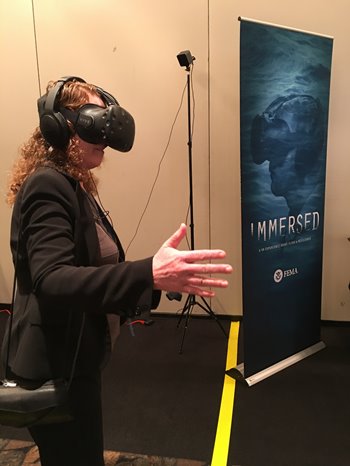For CEA media contact information, visit the Press Releases page.
Researchers tackle roles for technology in assessing risk for residential earthquake damage
(SACRAMENTO) As part of its commitment to help reduce residential damage caused by earthquakes, the California Earthquake Authority (CEA) featured innovative roles for technology during its second annual research forum this week in Sacramento.
The two-day event, titled “Innovation in Earthquake Risk Assessment: How Technology is Changing the Industry,” brought experts from government, academia and industry together for conversations on technology’s role in:
- Assessing the expected performance of houses during an earthquake.
- Measuring ground motion and building performance.
- Developing resources and tools to help improve structural deficiencies in houses.
- Characterizing damage after an earthquake.
- Creating immersive and interactive tools that can help educate people about earthquakes and drive them to take action.
“Technology has significantly increased our understanding of how the earth’s surface moves in both real time and geologic time,” said CEA Chief Mitigation Officer and Research Director Janiele Maffei. “We now have more data—from satellites, sensors and ongoing research studies—to help inform seismic building codes and to inform engineers on how to retrofit existing residential structures more effectively. CEA is fortunate to have access to California’s leading scientists and engineers for ongoing research results that may help support future CEA programs to further reduce earthquake losses.”
On the topic of assessing the potential for shake damage, forum panelists shared information about the latest tools used to evaluate how buildings might perform during an earthquake, such as CEA’s new app called QuakeGradeTM. Panelists also discussed how sensors that detect ground and building motion can provide valuable information to insurance providers and policyholders.
“When earthquakes strike, the damage they may cause can be expensive to repair,” said CEA CEO Glenn Pomeroy. “Research and technology play pivotal roles for us when working to help Californians reduce their risk for earthquake loss through education, mitigation and insurance. We’re always learning more about the effects of strong shaking on our homes, and how the seismic retrofitting of older houses can help to reduce damage.”
One forum panel focused on a project led by the Applied Technology Council, funded by CEA and the Federal Emergency Management Agency, to develop pre-standards for the seismic retrofitting of single-family, wood-frame houses. Another panel discussed how technology could help streamline post-earthquake damage assessments, which determine insured loss.
Social science was the focus for the forum’s second day, through a panel discussion on experiential communication tools—such as a new, virtual-reality experience designed to help people visualize the damaging effects of floods—and through conversations on how to make technology more useful in real-world applications.
For more details about the forum and the panel participants, see the event agenda. To learn more about CEA’s investments in research, visit CEA’s website.
About CEA
The California Earthquake Authority (CEA) is a not-for-profit, privately funded, publicly managed organization that provides residential earthquake insurance and encourages Californians to reduce their risk of earthquake loss. Learn more at EarthquakeAuthority.com.
Research forum image
For a higher-resolution version of this image, please contact Sarah Sol.

